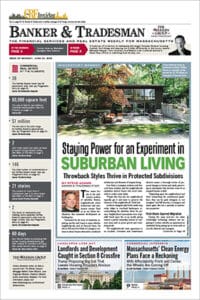In December, a diverse group of Boston area experts on transportation, economic development, community empowerment, land use and regional planning journeyed to Mexico to observe and experience Mexico City’s Bus Rapid Transit (BRT) service, known as Metrobus. The group, formally known as the BRT Study Group, is working to assess the potential for introducing high-performance BRT in greater Boston. The visit was hosted by officials from Mexico City, as well as the Mexico City office of the Institute for Transportation and Development Policy (ITDP).
Building on the region’s transportation development and funding conversations of the last year, the BRT Study Group believes improved public transportation is essential to transforming Boston into a leading global city for the 21st century.
As a participant in the visit, I was struck by the technical and policy sophistication of Mexico City’s overall transportation system. As much as we may hear about the difficulties Mexico is experiencing, it would be fair to say that my expectations for their degree of sophistication were low. I could not have been more wrong.
Not only were their systems highly sophisticated, but the overall experience greatly exceeded expectations. The buses and bus stations were impressively clean and efficient, and the volume of passengers they move is extraordinary; bus rapid transit, and even a city-sponsored bike sharing program, the city hums with activity. The busiest Metrobus BRT line moves more passengers per day than any one of the MBTA’s lines.
Better Than Average
The Metrobus system rivals any system in the world. The technological advances evident in the buses, bus stations and dedicated bus lanes are exceptional. The passenger information systems and fare collection systems are among the most advanced I have seen.
One key to the success of Metrobus is its use of state-of-the-art buses. For those of us whose view of transit buses has been dimmed by our American experience, one need only visit Metrobus to know that “bus” need not be a four-letter word. The buses in Mexico City are clean (inside and out), efficient and easy to board and ride.
The integration of their fare collection systems is particularly impressive. The fare card used by riders of Metrobus can also be used by riders of the city’s bike sharing system, called Ecobici. The functionality, coordination, and operation of these systems illustrate what could be possible in Boston.
The success of Mexico City’s transportation system is no accident. It has top-notch talent running the programs: ambitious, well educated, and – above all else – dedicated to the task of making transportation in Mexico City work.
More important than the talent and dedication of the staff is the coordination and refinement of their efforts on a policy level. It was clearly evident that the transportation and land use policies of the city are highly integrated – there were no obvious planning silos. The synergy between land use and transportation policy was most evident in the city’s traditional shopping district, where progressive transportation policies (most notably the implementation of pedestrian streets) has led to double digit percentage increases in land value and exponential growth in walking trips, with commensurate increases in commercial rents.
Taking Home Lessons Learned
So what lessons were learned from this trip that can be applied to greater Boston? How can we benefit from the success Mexico City is enjoying? These are weighty questions given the differences in culture, climate, funding and – perhaps most importantly – politics. But there are certainly enough similarities to suggest that translating some of the Metrobus experience to Boston is worth pursuing.
One of the fundamentals that could translate to Boston is the imperative to integrate land use and transportation planning more seamlessly. While the legal and political frameworks for land use and policy decisions are very different in Boston, this does not relieve us of the obligation to more thoughtfully and deliberately integrate our land use and transportation policies. Greater Boston, the commonwealth of Massachusetts and New England, are inextricably entwined with our transportation system. If it does not work for Boston, it will not work for the region. And it will stunt land development and economic growth for all, leading to imprudent growth and wasted resources.
Perhaps the biggest lesson learned is for the BRT system itself. The Metrobus system makes a convincing argument that a world-class transit system based on BRT solutions is not just viable, but imperative. The cost of implementing and operating a BRT system is substantially less than a rail transit system. More importantly, a BRT system, properly designed and operated, can offer a higher quality of ridership than our existing rail transit systems.
What does a properly designed and operated BRT system include? For starters, it is NOT the Silver Line, which for most of its route is in mixed traffic. The only portion of the Silver Line that constitutes a BRT system is the tunnel section between South Station and Logan International Airport.
A true, world-class BRT system includes high-capacity buses that look and feel like transit cars traveling in dedicated lanes, or entirely off-street. Well-designed BRT systems have transit stations that look and feel like transit stations, with level boarding and technologically advanced passenger information systems. Think of a Red Line or Orange Line experience, but in a vehicle with tires on pavement instead of wheels on tracks.
Now is the time for our city and state leaders to take the initiative and move our city’s transportation system into the 21st century. Our neighbors to the south, in a city with many more challenges than ours, have successfully blazed a trail for us to follow. BRT is the way ahead. Will we follow?
William F. Lyons Jr. is president of Fort Hill Infrastructure Services LLC.




